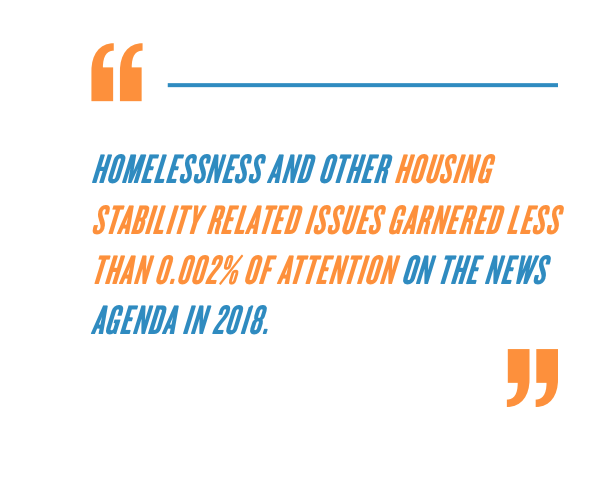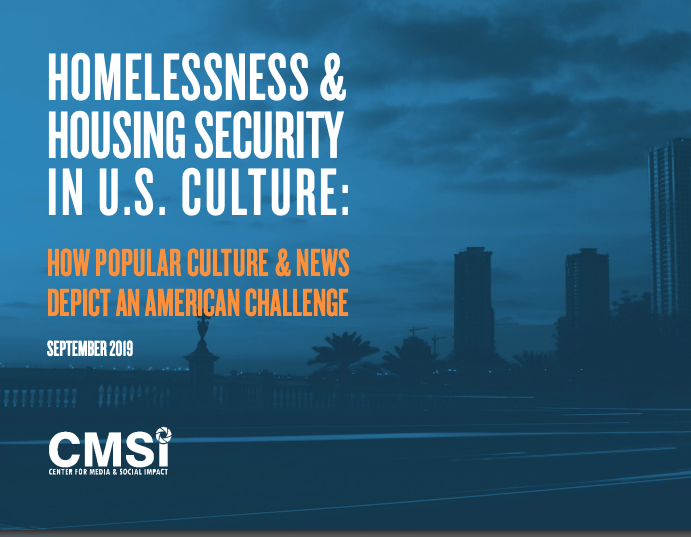Studying the media portrayal of homelessness across the country, the Center for Media & Social Impact (CMSI) at American University examined 150 episodes from 50 television programs and 5,703 articles published by 12 news outlets, all released between 2017-2018.
The objectives of the study were to determine the scope of media coverage on housing-related topics and how the topics were framed. To determine this, the research team investigated the following: who was represented and who was invisible; who spoke and who was silenced; what causes were identified; and the solutions that were offered.
The study was divided into three tiers: Top Popular Culture; Topic Specific Popular Culture; and News Coverage.
Top Popular Culture was composed of 120 episodes from the 40 most watched U.S. television programs compared to Top Specific Popular Culture which was composed of 30 episodes from 10 U.S. television programs with precise narrative focus on the topics of housing and homelessness. Lastly, the News Coverage portion of the study amounted to a final of 1,696 articles from the most read newspapers in the U.S. which “reflected the entire universe of news coverage on homelessness, affordable housing, and gentrification.”
Study Results
The following is a brief overview of the results of the study:
- Top Popular Culture
- Misrepresented the causes of homelessness
- Oversimplified the solutions to homelessness
- Spread the narrative of homeless victim and charity savior
- Lacked diversity
- Disregarded the existence of gentrification in American society
- Topic Specific Popular Culture
- Focused on gentrification within communities
- Presented narratives rooted in specific cities and neighborhoods
- Demonstrated greater racial diversity and allowed the homeless characters to speak
- 67% of the episodes pointed to inequities and failures of social systems and structures (not individuals) as the driving cause of homelessness
- News Coverage
- Covered issues of homelessness less if political partisanship leaned center or right
- Disproportionately linked race and ethnicity (especially indigenous people) with coverage on encampments, while ignoring race and ethnicity coverage in shelters, policy and philanthropy
- Cited structural causes as the leading contributor to homelessness, affordable housing, and gentrification
- 50% of news articles that referenced homelessness were single mentions
Conclusion
The topics of homelessness, affordable housing and gentrification were found to be most prominent in the least prominent source. Unlike the Top Popular Culture programs and the news articles, the Topic Specific programs were not amongst the most watched or popular shows, however they presented the most accurate depiction of the homelessness and housing crisis in the country. In terms of written media, "nearly 90% of articles about housing stability focused exclusively on one of the three main issues.”
Overall, American media falls short in their delivery on issues of homelessness and housing affordability while promoting stereotypical portrayals of people experiencing homelessness.


